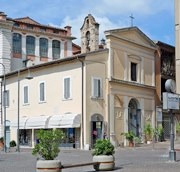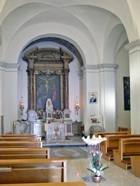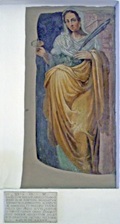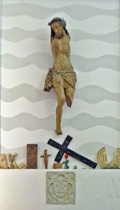


Pope Gregory IX confirmed this church as a possession of Abbazia di San Pietro in Valle in 1231. It was named “de Platea” because it stood on the central piazza of the city.
Don Angelo Tramazzoli rebuilt the church in 1642. He also supported the cobstruction of the nunnery of Santa Teresa, which his nieces Caterina and Lucia Tramazzoli joined in 1626. Caterina Tramazzoli became Sister Maria Eletta di Gesù.
Bishop Antonio Belli re-consecrated San Giovannino in 1892.
The facade (18th century) is partly over-shadowed by the modern Palazzo Mariani, to the right.
Interior

The present elegant church is in the form of a Latin cross with a barrel-vaulted apse.
Part of the earlier structure and some fresco fragments (early 15th century) survive in the corridor that leads from the right transept to the sacristy. [I have not managed to see them yet].
St Lucy (16th century)

The inscription below records that Angelo Tramazzoli financed the rebuilding of the church in 1642.
Crucifix (ca. 1500)

The relief below, which depicts the arms of the Monte family, came from their altaron the opposite wall.

